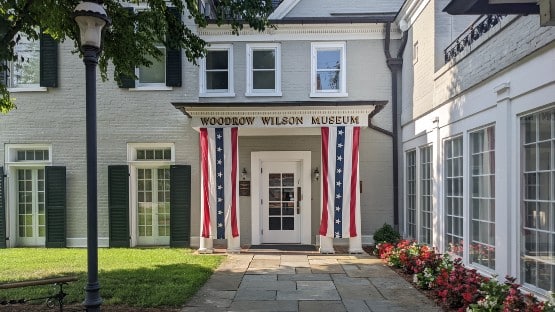
The artist is about halfway through the multi-year project, undertaking to play in concert the entire keyboard repertoire that Bach composed for adult players, 140 pieces that require more than 16 hours to perform. No one in the region has undertaken such a program, a herculean task likely to be heard only in one or two very large American cities or in Europe.
Next season, Schmidt will begin to perform cycles of Bach’s major harpsichord works in Germany, Holland, and New York, all places where he regularly appears as a pianist and harpsichordist. “I’m excited about that,” he says, “but I have this distinct feeling that Staunton will remain my favorite place to share Bach’s keyboard works.”
Clearly, Schmidt loves his Bach. “This body of work represents a complete and unique worldview,” the harpsichordist comments. “When it comes to experiencing life through the heart, intellect, eyes, ears, and fingers of a genius, Bach is my go-to person.” The composer’s beautifully ordered expression of the multiple dimensions of human experience could be one reason that European holistic medical practitioners now recommend listening to Bach’s keyboard music for its healing effects: calm, relaxation and positive energy.
For music lovers The Bach Project offers an opportunity to hear the master’s works played in smaller halls and on the harpsichord, the intimate circumstances and the instrument for which he composed them. The upcoming concert, at 3 p.m. on Sunday, May 27 at Central United Methodist Church, is the first installment of Bach’s seven Toccatas and six French Suites; the balance may be heard Sunday, Nov. 11.
Nearly two centuries before Bach (1685-1750) a new genre of keyboard works evolved. It emphasized the player’s use of varied “touches” or effects on the keyboard, and some composers called their creations toccatas, from the Italian verb for touch. Jason Stell, a musicologist and executive director of SMF, explains that “toccatas are full of color and variety and move spontaneously between different moods.” Stell notes that “the toccata celebrates musical textures better than any other genre, from rapid scales and runs across the keyboard to virtuosic tricks of overlapping or crossing hands. Finger dexterity was its M.O.” Bach also wrote many toccatas for the organ. The musical motif of The Phantom of the Opera is taken from one of them, the famed D-minor toccata.
The French Suites, like the composer’s English Suites and Partitas, attempt to capture the best elements of a national style–not merely a musical style, but a way of being. The French Suites are smaller and more intimate than many of Bach’s English Suites, for example. They were written mainly between 1722 and 1725, marking Bach’s transition from early court and church posts to his final and most significant 26 years at Leipzig.
Bach himself didn’t call the suites “French,” and in fact they were greatly influenced by Italian music, which tended to dominate the era. Suites were played as dinner music or for dancing. The pieces are all in the same key, and most have seven sections, all traditional dance forms that contrast in tempo and rhythm. From the moderate German allemande, the suite progresses through the fast French courante, to the slow Spanish sarabande, and then quickens through the lively bouree and the English gigue, or jig.
The suite originated about the same time as the toccata, but Bach brought many features to their highest development–such as the rhythmic contrast between dances, the use of musical ornamentation like turns and trills to draw attention to important moments, and the order of dances within the suite.
Prior to the concert Carsten Schmidt and Jason Stell will give a newly-announced joint workshop, on Saturday, May 26, also at 3 pm at Central United Methodist Church, 14 N. Lewis Street, Staunton. The performing artist and the music historian will discuss and demonstrate how the toccata evolved in the 150 years before Bach, playing examples by his most significant predecessors.
Tickets for each event cost $20, seniors $18, students $8, and ages 16 and under free. Annual subscriptions offer a thrifty 15% discount, and this year annual subscribers attend the newly-scheduled lecture recital courtesy of the festival, with thanks for their support. For more information go to stauntonmusicfestival.com or call (540) 569-0267. Patrons may purchase tickets at Bookworks (101 W. Beverley Street), on the website, or by phone at 800-838-3006.










